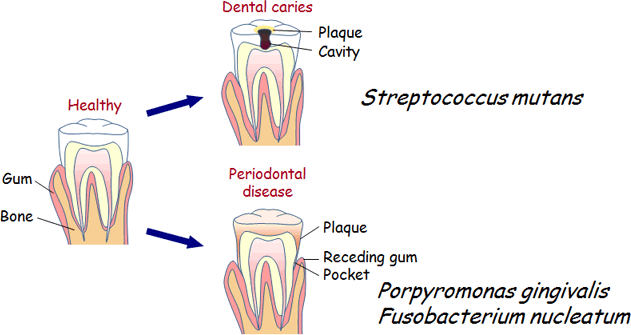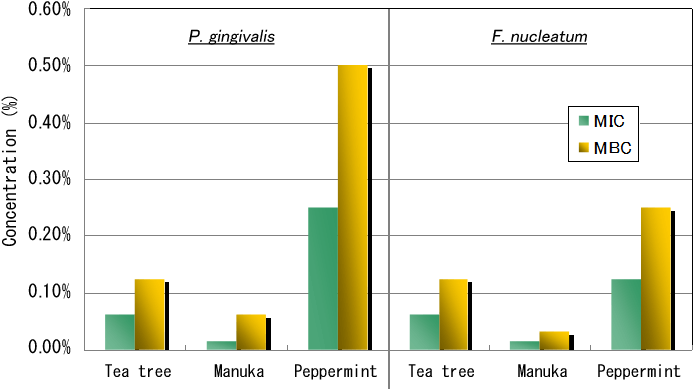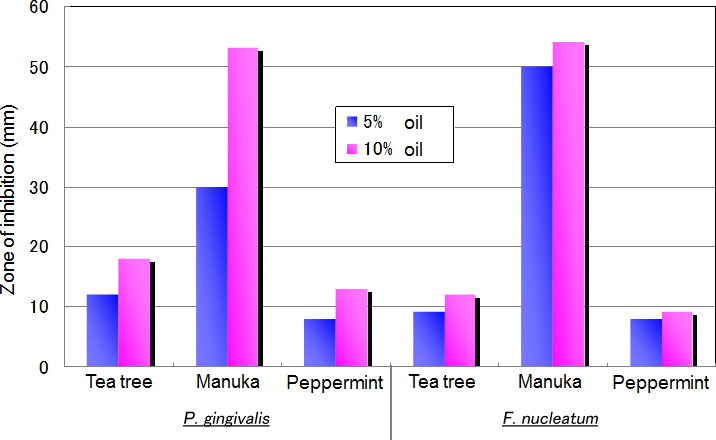No. 71 Antibacterial Activity of Manuka Oil on Periodontal Pathogenic Bacteria
Background
Our company investigates Manuka honey has high amount of methylglyoxal (MGO) as an antibacterial constituent (* please refer to the newest result of research "10th", "11th" and "41th" of our homepage for details.).
Manuka (Leptospermum scoparium) give us not only Manuka honey, but also Manuka oil extracted from Manuka leaf. Because of high content of triketone derivatives, Manuka oil shows remarkable antibacterial activity than other essential oils.
In this study, antibacterial activity of Manuka oil on periodontal pathogenic bacteria was exploerd for developments of new oral care products.
Dental Caries and Periodontal Disease
Recently, it is said that the oral health condition is deeply related with whole body diseases such as diabetes, and more attention has been paid on mouth care.

To suppress the increase of these bacteria is important, and many healing materials for oral care have been developed.
Triketone derivatives : Antibacterial constituents of Manuka oil

Experiment : Antibacterial activity of Manuka oil against P.gingivalis and F.nucleatum.
Bacterias
- Porphyromonas gingivalis (ATCC33277)
- Fusobacterium nucleatum (ATCC25586)
Samples
- Manuka oil
- Tea tree oil
- Peppermint oil
Methods
- MIC : Minimum Inhibitory Concentration
MIC is the lowest concentration of a antibacterial reagent that will inhibit the visible growth of a bacteria. - MBC : Minimum Bacteriocidal Concentration
MBC is the lowest concentration of a antibacterial reagent required to kill 99.9% bacterial. It can be determined from broth dilution MIC tests comparison with subculture of agar media without the reagent. - Disc diffusion test
Result : MIC and MBC
Fig. 1

Result : Disc diffusion test
Fig. 2

→ Manuka oil showed higher antibacterial activity against P. gingivalis and F. nucleatum than other essential oil.
Conclusion
Manuka oil could be applied as a key ingredient of oral care products.
